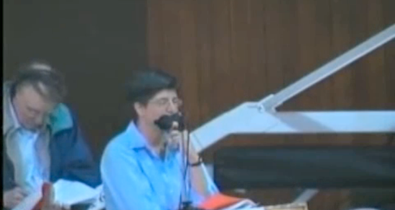Speaker against privacy in voting.
2010

Film Length: 1 minutes 39 seconds
Susan Weinstein of the Wayland Housing Authority speaks at the CON microphone and explains why she is against privacy in voting on town meeting floor.
Due to some low level and sometimes garbled audio, a transcript is provided here.
Speaker against privacy in voting
4/14/10
Film Length: 1 min 39 seconds
Susan Weinstein of the Wayland Housing Authority and speaker at the CON microphone explains why she is against privacy in voting at town meeting.
Commentary by Alan Reiss in response to Susan Weinstein’s speech.
What Susan seems to be saying is that she needs to maintain visual contact with the voters to help get the voting results she wants.
The visual contact would be to let the voters know that they are being watched and that if they vote against an article then she (and everybody else) would know it.
Since Susan did not state that she speaks only for herself then it is not clear whether she represents the rest of her board, the Wayland Housing Authority.
The following are possible repercussions to the voter in this scenario?
1. Voters might be coerced into voting against their will.
2. Voters may cast a vote that is false in their own beliefs.
3. Voters cast votes to avoid an uncomfortable situation which may involve social implications that go beyond the scope of the town meeting.
4. Voters may self-select not to vote or not to attend the town meeting at all to avoid an awkward situation among their peers.
5. Elected Town officials exert undue influence on the outcome of the vote.
7. The voter is no longer free to vote with their hearts, vote with their minds and/or vote with their pocketbooks.
One of the three most important benefits of Electronic Voting is to neutralize this situation, give people voting freedom and help to bring more people to town meeting to make a better democratic process.
We have privacy at the polls and nobody expects one to tell everyone how they voted at the polls. We vote in private. The same should apply to town meeting.
This same phenomenon can occur in any aspect of town meeting. Any vote, any committee, any authority; spending, borrowing, zoning, building.
Electronic voting will set us free at Town Meeting!
“Sir, Susan Weinstein Concord Road. I’m not exactly sure how to say this but, as you all know, probably, I am very interested in affordable housing. Which is, in fact, a somewhat unpopular subject. Town meeting is a community event and I understand that some people would prefer to have their vote private. But I believe that if you care enough to vote, then you should care enough to stand up for it. So while I like the idea of expediting, I’m not real fond of the potential duplicity, [and] the ability of people to say one thing [and] vote another, [in] anonymously I suppose. So that is my concern {garbled} and I think that this is something that will evolve like maybe there could be a hybrid that is stand up and push the button so you we don’t actually have to do the voting but your still standing for your vote. So perhaps that’s something that the moderator will consider if we go forward with this. Thank you.”
On the issue of a ‘hybrid’ voting method:
Susan Weinstein has suggested above that a ‘hybrid’ voting technique be suggested to the Moderator.
What she seems to be suggesting is that we have a procedure where the moderator calls for an AYE and we stand and press the AYE button. Then the moderator calls for a NAY and we stand and press the NAY button. Since nobody is counting bodies, the only counting that is occurring is being done silently (and rapidly) by the electronic voting system.
Here are the problems:
1. A person could choose to stand up on AYE and press NAY
2. A person could choose to stand up on NAY and press AYE
3. A person could choose to never stand up and press AYE or NAY
This technique would put pressure on people to stand when they really wanted their privacy.
This technique would not give Susan what she wants because any person could be ‘duplicitous’ by doing the opposite of what Susan wants to observe.
This technique would never match a visual standing vote with the electronic results because people would choose to do what they wanted, in spite of Susan’s wishes.
This technique would give no information as to whether the voting system was accurate or flawed (and it will be not be flawed) but would provide much fodder for people to accuse the voting system of inaccuracy.
The electronic voting system must be used as directed.
The moderator calls for a vote and opens the voting window.
The voters silently vote AYE, NAY or ABSTAIN.
The voting window closes and the final results are shown for all to see... one minute later and with incredible precision.
Any other use of the equipment will bring inefficiency, chaos and introduce coercion into the process.
Bottom line: Use electronic voting as directed.
